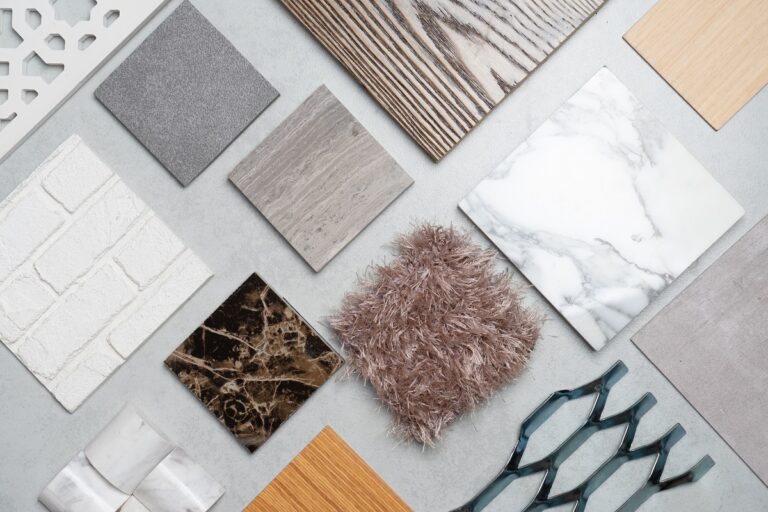If you’re not shopping wholesale and getting trade pricing, you’re leaving money on the table.
Wholesale is the secret to increasing the profitability of each and every project and earning more revenue without taking on more clients.
But when you’re trying to establish wholesale relationships for the first time, the process feels daunting. Don’t let it stop you from tackling this massive opportunity.
The better you get at shopping wholesale, the more you can earn from your existing projects—without having to take new clients on.
Read our guide to interior design wholesale, and you’ll be ready to tackle this huge profit opportunity.
Table of Contents
What is interior design wholesale?
Interior design wholesale refers to the practice of purchasing goods and materials at discounted prices for use in interior design projects. It involves buying products directly from wholesalers rather than through retail channels.
Interior designers need to source a variety of items such as furniture, lighting fixtures, fabrics, flooring materials, accessories, and decorative elements to complete their projects.
Wholesalers serve as intermediaries between manufacturers and consumers. Wholesalers buy items in bulk and then resell them to interior designers and retailers. This way, manufacturers are able to focus on producing products while wholesalers take charge of distributing products to interior designers and the retail market.
Check out our workshop with Kimberly Horton of Interior Design Collaboratory on all things wholesale.
What is a trade account?
A trade account is established by interior designers with suppliers, manufacturers, or vendors within the industry. These accounts are often set up to facilitate the purchasing process for design-related products and materials.
Trade accounts offer certain benefits to interior designers, such as discounted pricing, access to exclusive products or collections, priority ordering, extended payment terms, and sometimes personalized support or assistance from sales representatives. These benefits are aimed at helping designers efficiently source materials and products for their projects while also saving money.
By establishing trade accounts with various suppliers and manufacturers, designers can streamline the procurement process and gain access to a wide range of products to meet their clients’ needs.
How to find wholesale vendors as an interior designer
Curious how interior designers find wholesalers?
Most designers mix and match a few methods to build these relationships over time.
Here are the most effective strategies:
- Industry trade shows and events: Attend trade shows and industry events focused on interior design, home decor, furniture, and related industries. Events like High Point Market and Las Vegas Market feature numerous vendors and suppliers showcasing their products. Networking at these events can also lead to valuable connections with potential suppliers.
- Online directories and marketplaces: Utilize online directories and marketplaces specifically tailored to interior design professionals. Websites like SideDoor, Designers Today, DesignerInc, Daniel House, To the Trade, and Designer Pages connect designers with wholesale vendors and suppliers.
- Trade publications: Subscribe to trade publications and magazines in the interior design and home decor industry. These publications often feature advertisements from wholesale vendors and suppliers, as well as articles highlighting new products and trends.
- Industry organizations: Join industry associations and organizations such as the American Society of Interior Designers (ASID), the International Interior Design Association (IIDA), or local chapters and groups. These associations often provide resources, networking opportunities, and access to preferred vendor programs for their members.
- Networking and personal recommendations: Network with other interior designers, architects, contractors, and professionals in the industry. They may be able to recommend reputable wholesale vendors and suppliers based on their own experiences.
- Online research: Conduct online research to identify potential wholesale vendors and suppliers. Start by searching “wholesale furniture” in Google and see what companies come up. Visit their websites to learn more about their products, pricing, and terms. Reach out directly to inquire about setting up a trade account or requesting product samples.
- Trade-only showrooms: Visit trade-only showrooms and design centers in your area or in major design cities. These spaces typically offer a curated selection of products from various wholesale vendors and suppliers, making it convenient to explore different options in one location.
- Social media: Follow wholesale vendors and suppliers on social media platforms like Instagram, Facebook, and LinkedIn. You can also participate in Facebook groups and other online communities dedicated to sharing recommendations and insights about suppliers.
By leveraging a combination of these strategies, you can continue to find new suppliers and products for your ever-evolving design style.
Best wholesale vendors for interior designers
Looking for the best interior design trade programs? It’s important to build up your own list of trade programs that offer helpful discounts and fit with your design style. To get you started, here’s a list of some popular wholesale suppliers.
Top wholesale suppliers for interior designers:
- Alder & Tweed
- Annie Selke
- Cyan Design
- Global Views
- Made Goods
- Palecek
- Phillips Collection
- Rowe
- Thibaut
- Vanguard Furniture
- Villa & House
- Visual Comfort
Our friend Kimberly Horton shares more wholesale companies in her free list.
Common misconceptions about interior design wholesale
Before we dive in any further, it’s important to address the elephants in the room.
There are some common misconceptions that keep interior designers from using this sourcing method.
1. Buying wholesale will cost more for clients
Many interior designers worry that sourcing wholesale furniture and decor will cost their clients more money. But the reality is that many of these products make it to the retail market anyways. Your client pays MSRP no matter what. The difference is that YOU keep more of the profit instead of letting the retailer get it.
2. Clients will object
You might also fret over clients objecting to the practice, pushing back, and asking for your trade discounts.
The truth is that, for the most part, clients aren’t aware of how you source products. It’s not your job to explain the inner workings to them.
When clients ask a lot of questions and you have to communicate about your pricing, tell them that you charge at or near MSRP. Explain that you aren’t able to offer the best-possible pricing because it would take you more time to do so (and the cost for that additional sourcing time would likely eliminate any savings they would have received from that lower-priced item).
If clients object, be willing to walk away. Clients don’t get to decide how you do business. It’s up to you to set your policies and stick to them.
3. Shopping wholesale is too complex
The final misconception about shopping wholesale is that it’s so complex, the extra profits aren’t worthwhile. But that is absolutely not true. You can learn how to shop wholesale little by little, one product at a time. Over time, you’ll become a pro at it and steadily grow your profits.
You can learn more about these myths and misconceptions in our comprehensive wholesale webinar.
Benefits of shopping wholesale
There are so many compelling reasons to shop wholesale as an interior designer:
- Higher profits compared to shopping retail – Compared to shopping retail, you can earn 2-5X more profits on every item. You get the item at a lower price, but still charge MSRP.
- More specialized, unique products – Clients don’t just come to you for your design approach, they also want your access to one-of-a-kind products, and shopping wholesale allows you to deliver on that expectation.
- Product customization – Products purchased via wholesale channels often come with customization options not found on the retail market.
- Consistent quality – When you work with trusted wholesale partners, you can feel more confident in the item’s quality when placing orders.
- Relationship-building – The more you shop wholesale, the deeper relationships you build. You form long-term business partnerships with wholesalers, who in turn are connected with manufacturers and distributors.
- Increased convenience – Wholesalers handle logistics, shipping, and warehousing on top of offering online ordering. The process is as easy if not easier than shopping retail.

Why designers should markup products
Especially when getting started, designers might feel bad about marking up products and not giving their clients access to their trade discount.
But you shouldn’t feel bad about it. Markups are standard practice for good reason.
Here’s why designers should markup products:
- Compensation for time spent on sourcing and procurement
- Covers more of your business’s overhead
- Covers risk and liability
- Compensation for customizations
Essentially, markups cover the time you spend dealing with products—without you having to charge your client extra amounts for these tasks. This way, the client is paying for your design fees, the products, and your hourly project management fee as needed.
How to start shopping wholesale step by step
Ready to get started? Follow these steps.
1. Gather the information needed to open accounts
Begin by compiling all necessary documentation and information required to open wholesale accounts. This may include business registration documents, tax identification numbers, and proof of business ownership or operation. Have these items ready so you can supply them when asked.
Here’s a list of commonly requested documents:
- Proof of business
- Current business or state professional license
- Tax ID or EIN
- Resale certificate (You apply for this directly with the state where your business operates.)
- Business bank account
- Accreditation certification (For example, NCIDQ, CCIDC, or proof of membership in a professional organization like ASID, AIA, or IIDA.)
2. Research and choose receiving companies
Look up receiving companies or logistics partners that can efficiently handle the delivery and warehousing of wholesale goods. Choose companies with a proven track record of reliability and professionalism in handling shipments. (Check with designer communities—like DesignFiles’s Facebook group with 10K+ interior designers—for recommendations in your area.)
3. Find reputable wholesale companies
Use reputable sources such as industry directories, trade shows, and online marketplaces to identify wholesale companies that offer the products you need. Research their reputation, customer reviews, and product quality before applying for wholesale accounts.
4. Open trade accounts
Contact the wholesale companies you’ve identified and initiate the process of opening trade accounts. Follow their procedures for account setup, which may involve filling out applications, providing references, and agreeing to terms and conditions.
5. Source products
Once your trade accounts are established, start sourcing products that align with your design projects and client preferences. Explore the catalogs and offerings of your chosen wholesale vendors to find the best fit for your business needs.
6. Research product pricing
Conduct thorough research on product pricing to ensure accurate pricing for your clients while maintaining healthy profit margins. Compare wholesale prices with retail prices to determine appropriate markups for your services.
7. Markup products
Calculate appropriate markups for the products you source based on your business expenses, overhead costs, and desired profit margins. Ensure that your markup strategy is transparent and fair to both you and your clients.
8. Order goods and manage inventory
Place orders for the selected products through your wholesale accounts and manage inventory effectively to avoid stockouts or overstock situations. Implement inventory tracking systems to stay organized and fulfill client orders promptly. You can easily track orders with DesignFiles.
9. Deal with any damages or claims
In the event of damaged or defective products, promptly communicate with the wholesale vendors to resolve issues and file any necessary claims. Maintain open lines of communication to ensure timely replacements or refunds for affected items.
When you follow these steps, you can start making the most of wholesale relationships and bumping up the profit from each project.
If you get stuck or overwhelmed, remember to think, one product at a time. Source wholesale as much as you can, but don’t worry about leaning on retail options where needed.
With DesignFiles you can track purchase orders and create your own product library with high-quality items you can use again and again. Start a free trial of DesignFiles.


